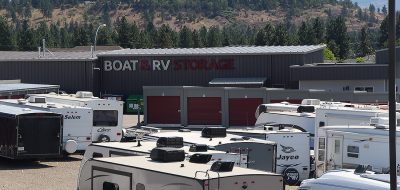Dashboard instrument displays have continued to become more and more trend setting, all black faces then white. Some, like that offered by Silver Leaf, provide the all digital glass dash, rivaling that of the aircraft industry. But, these still require taking your eyes from the road to view. So, what’s next? My money will be on HUD “Heads Up Display” projected see through instrumentation. Similar to that found on some automobiles, except the large motor home windshield will probably require a separate small stand alone glass piece to accomplish the clear projection. Automobiles currently require special windshields designed for the HUD projection.
In a motor home, having all the instruments within view while watching the road, would be a great benefit, both for safety and driver fatigue. Additionally, the projection of the navigation and possibly the back up camera could add further dimensions. Even though, most, if not all navigation units are audio equipped, there are times when a quick view is helpful. A good example of this can be found when traveling through a city with multi-lane highways and the need to understand which lane to be in to make your next turn.
I’ve driven a number of miles with HUD instrumentation that I had in a car I owned for three years. It could be adjusted slightly up or down, dimmed or turned off. It is not distracting, like one may think that has never tried it. In fact I found it was easily looked through and forgotten to the point where I would catch myself looking down to check my speed. So, if anything, it requires practice to use it efficiently.
But, why stop there? Now let’s add the projected night vision that has been introduced by General Motors for Cadillac. The night vision is essentially a thermal imaging device originally designed and used by the military. Infrared driven, it substantially enhances the road and obstacles ahead. Though I’ve never had practical experience with this gizmo, I would think, at a $2300 Caddy option, it better do something good.
I wouldn’t look for these to show up too soon at your local dealer, especially thermal imaging. But, the standard HUD, perhaps even in an after market plug and play kit may be a reality in the not so distant future.
Keep Your Eyes On The Road – Lug_Nut – Peter Mercer





Pingback: my url
gonesouth
Interesting stuff. It’s come a long way since I worked on HUD’s in university in the 70’s. Back in those days it was pretty conceptual, looking at the benefits and how to set the display up (size, need for color, etc) so that you didn’t have to refocus. I’m sure it has come a long way since, and a lot of that stuff is standard now.
I think that the big issue here is that with modern technology you can probably verify if drivers are regularly looking at the mirrors and gauges or just staring down the road, or falling asleep. A beeper to wake you back up will be the first practical application other than night viewing.
good job, Lug_Nut
Nerdofparadise
The speed at which new ideas come in to use is amazingly slow.
Sam Taylor
It may be more convenient not having to look down, but from a safety factor, I do not believe it to have any effect. When one looks at a hud, they have to focus on the windshield, and when this happens the road in the background is not really in one’s field of vision.
Joel Ashley
It sure would be nice not to have to bob my head around trying to see a guage or light panel over or under the steering wheel. Why is it that the 45 to 65 mph speedometer gradient falls right behind the top of the steering wheel? Since we can’t move the wheel (very far at least), seems like a better instrumentation placement has been overdue for the last 70 years. At least HUD sounds plausible. But how visible is it in the daytime with bright sun impinging at various angles, including straight-on, or if you’re wearing sunglasses?
Not to get far off topic, but my big gripe with so-called modern panels is the odometer. Today’s digital/electronic ones can’t be read with the key off. They are dinky. And the one on my new Beaver coach is placed so low on the panel that you have to stand on your head on the driver’s seat to see it (albeit upside down)!